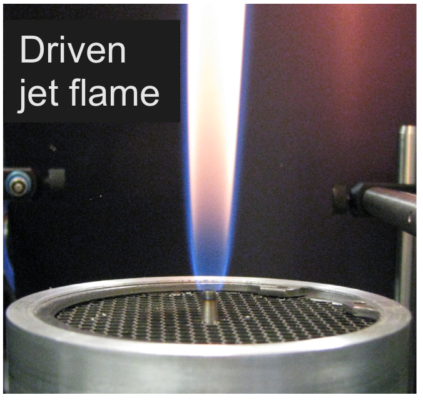Ultrafast Laser Spectroscopy / Imaging
Advantages:
- High Peak Powers
– Nonlinear Phenomena
- Ultrashort Pulses
– Collision-Free Measurements
– Time Dynamics
– Spectral Bandwidth
- High Repetition Rates
– Data-Acquisition Bandwidth
– Time Series, PSDs, Correlations
- Potential to Simplify NL Spectroscopic Measurements
– CARS Thermometry and Species Detection with One Laser Beam
– Pulse-Shaping for Species Selective Detection
– Collision-Independent Species Concentration using LIF
– Interference-free Atomic Species Concentration Measurements
High-bandwidth for Multi-Photon Excitation Advantages
1. Nanosecond vs Femtosecond Raman excitation of N2
[S. Roy et al., Progress in Energy and Combustion Science 36, 280-306 (2010)]
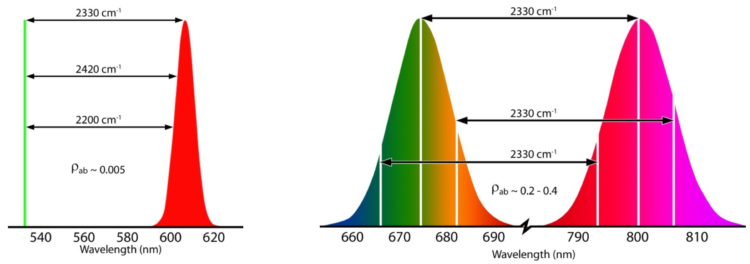
2. For Multi-photon Absorption
[Patnaik et al., Plasma Sources Science and Technology 26, 103001 (2017)]
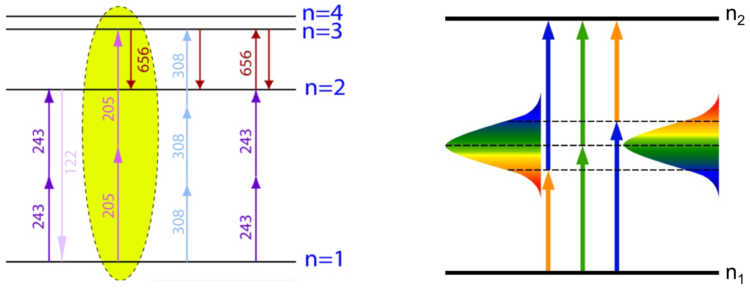
1) kHz-rate Femtosecond (fs) Coherent anti-Stokes Raman Scattering (CARS) Line Imaging
[Optics Letters 36 (21), 4182-4184 (2011)]
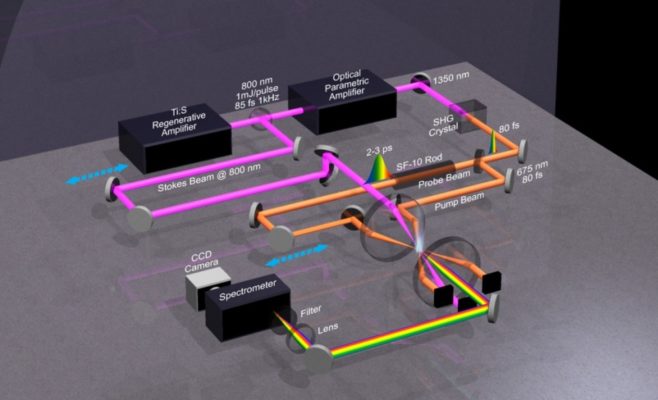
2) Two-Color fs Fully Resonant Electronically Enhanced CARS (FREE-CARS)
[Stauffer et al., Journal of Chemical Physics 145 (12), 124308 (2016)]
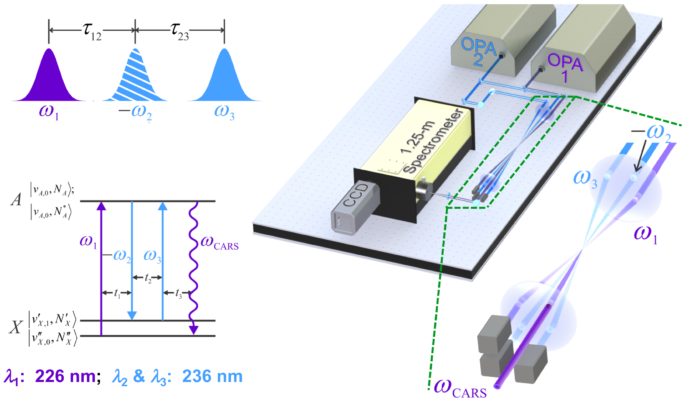
2.a FREE-CARS: Single-shot temperature and [OH] in laminar C2H4–air flame
2.b FREE-CARS: Detection of minor species (for example NO)
3) Single-Shot 100-kHz picosecond-CARS in H2/N2 turbulent jet diffusion flame (Re = 10,000)
[Roy et al., Optics Letters 40 (21), 5125-5128 (2015)]
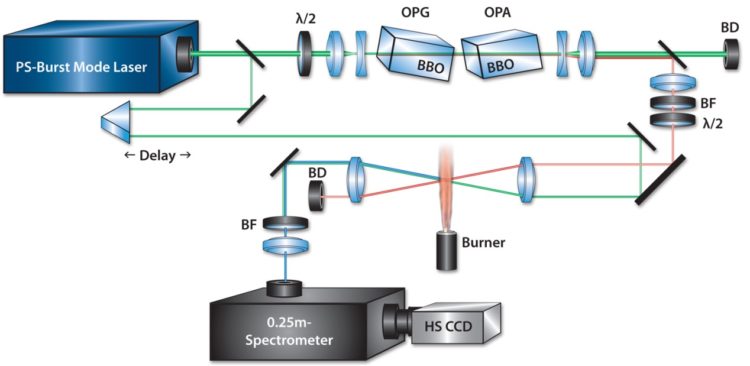
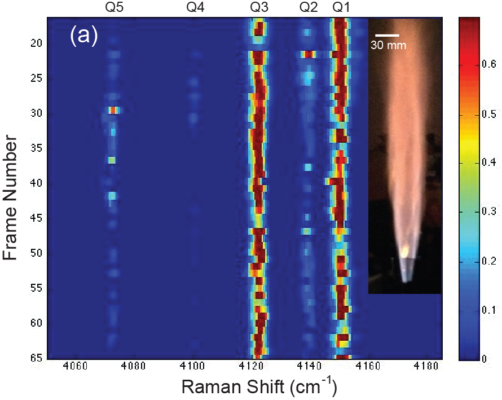
4) 1-kHz, Single-Shot 2D CARS of O2
[Miller at al., Optics Express 24 (22), 24971-24979 (2016)]

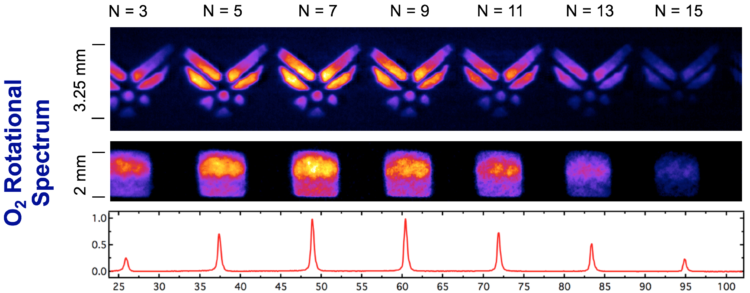
5) Fs Laser-Based Two-Photon Absorption Laser-Induced Fluorescence (TALIF) Imaging of H-Atom
[Optics Letters 37 (15), 3051-3053 (2012)]
Shorter pulses improve two-photon excitation and reduce single-photon photodissociation

Longer pulse excitation for TALIF produces very high photolytic interference

6) kHz-rate Fs-TALIF Imaging of CO in a Driven Flame
[Richardson et al., AIAA Aerospace Sciences Meeting, AIAA SciTech Forum, (AIAA 2018-1773)]
High peak intensity; low pulse energy
Minimal photolytic CO production
